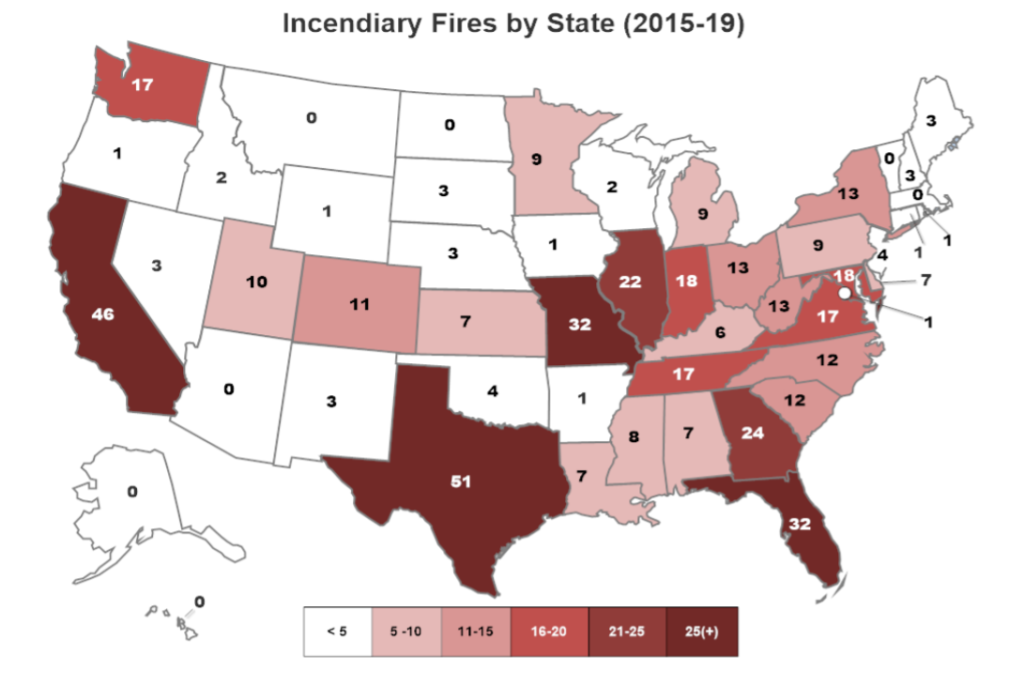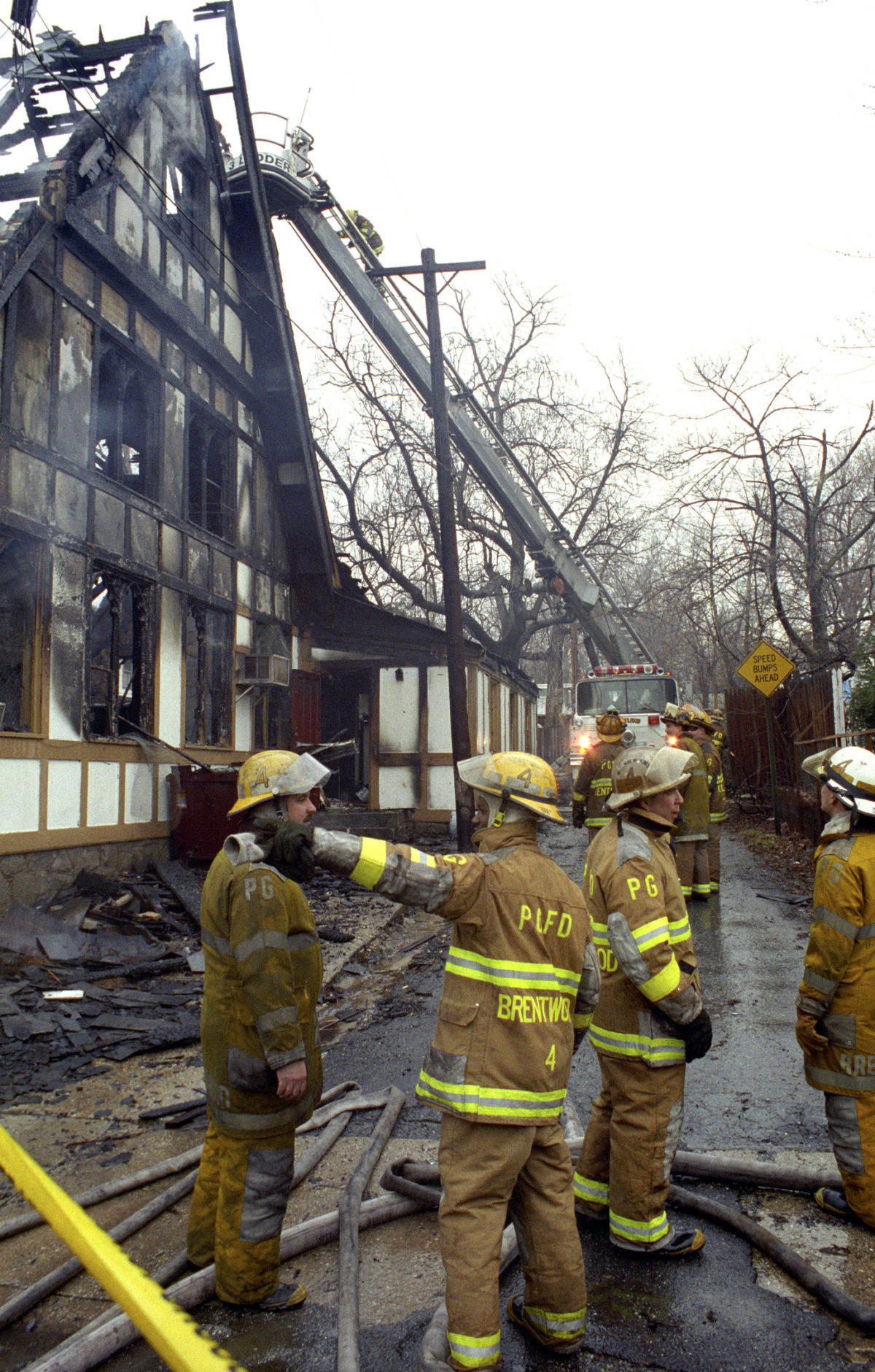
Reports Of Arson-Related Incidents At Houses Of Worship Increased By Over 5% In 2019
By a Biometrica staffer
A day after Easter, we take a look at data on arson- and explosive-related incidents across houses of worship in the U.S. in 2019. Although the report, published by the ATF, includes accidental and natural fires, we specifically examine those that were set up with the intention of inflicting damage on religious establishments, which have often been the main target of such crimes over the ages.
There were a total of 234 House of Worship-related (or HOW-related) incidents that were investigated by local, state, and federal agencies in 2019. That represents an increase of more than 5% in the overall incidents associated with HOWs, when compared with 2018, according to a report published by the Bureau of Alcohol, Tobacco, Firearms and Explosives (ATF).
But it was a similar decrease (i.e. of over 5%) when compared with the average number of incidents over the previous five calendar years (2014–18). Of the total incidents reported in 2019, only 10 involved either bombings, or bomb threats or hoaxes, while the rest involved a fire-related occurrence.
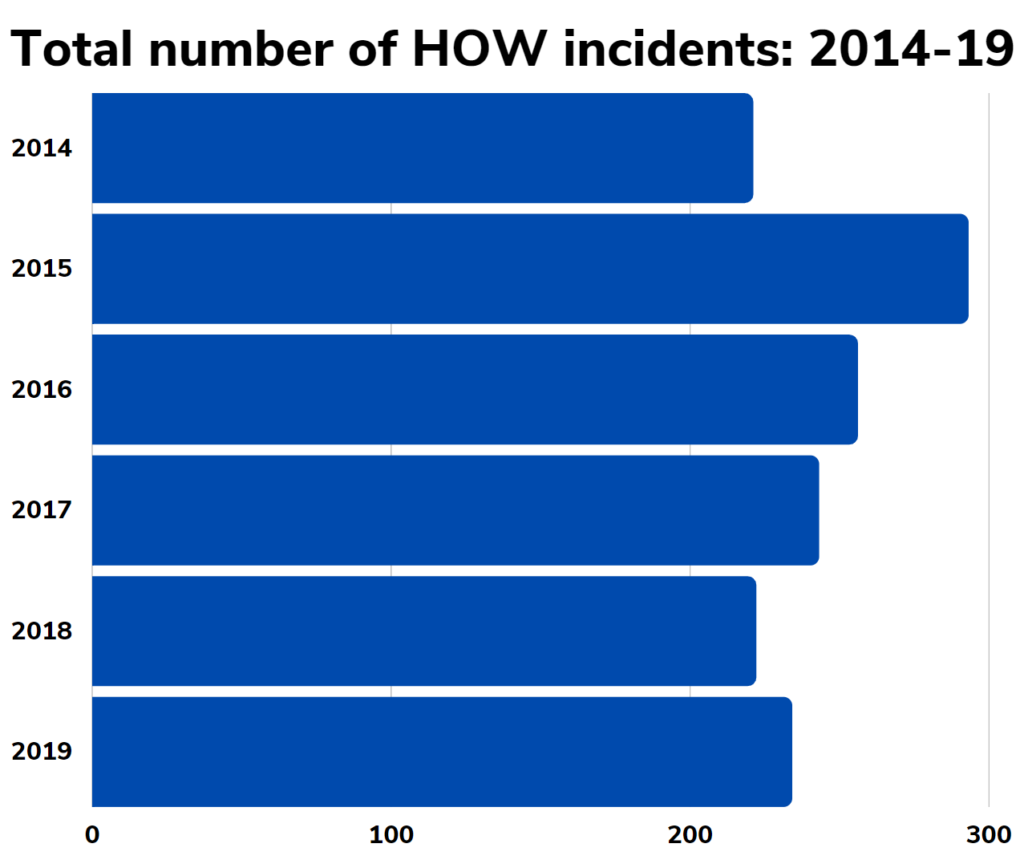
But before we go further into the data, we need to define the kind of properties that fall under HOW, what categories of incidents are looked at, and who publishes this data.
We’ll answer the last question first: The HOW incidents report is an annual statistical product generated by the United States Bomb Data Center (USBDC). This report gives a detailed statistical analysis of HOW incidents in the U.S. that have been reported in the Bomb Arson Tracking System (BATS) over the past 5 years. BATS is a comprehensive Web-based arson and explosives incident repository, case management and reporting system.
According to the report, HOW is defined as a religious-affiliated property and includes rectories, offices, schools, funeral parlors, etc. It may also include private property, like vehicles owned by persons working or attending a church service.
The report classifies “incidents” into seven categories: Accidental, incendiary, natural, undetermined, bombing, hoax, and bomb threat.
In 2019, there was a “noteworthy increase in incendiary fires,” the report says, adding that HOW fire-related incidents resulted in over $21.5 million in damages, along with three injuries and no deaths.
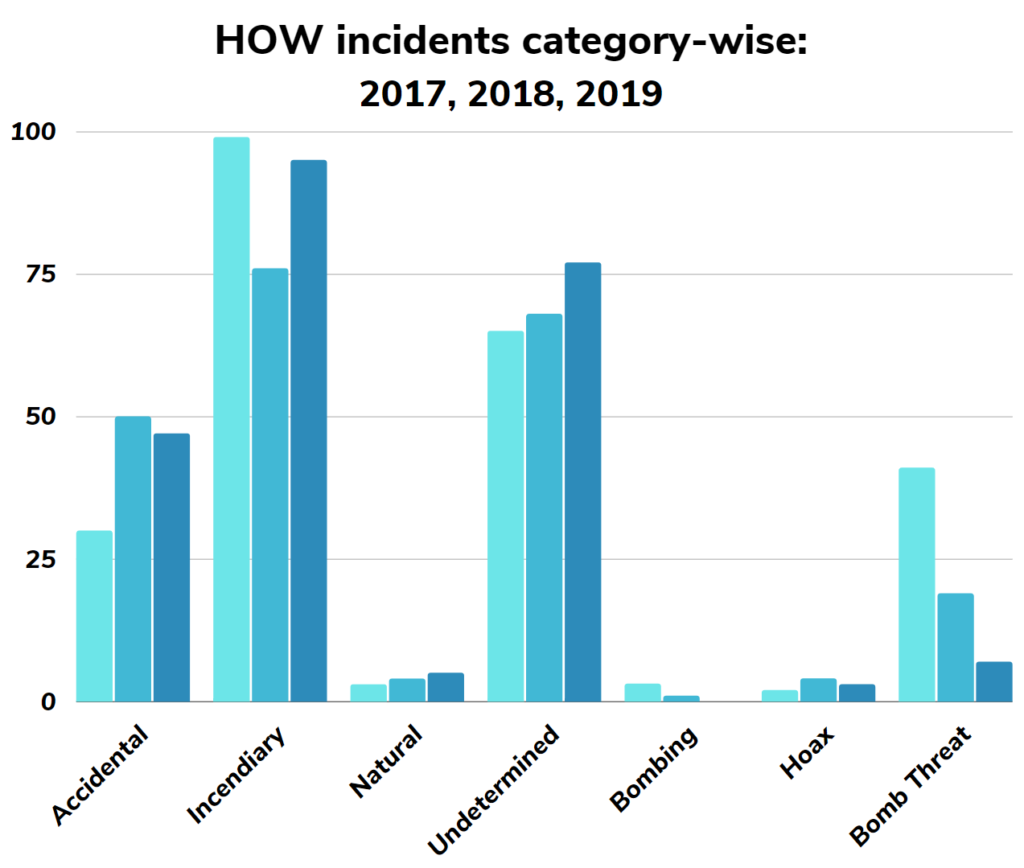
Bombing, Explosives Related HOW Incidents
For 2019, the number of bombing/explosive related incidents reported was a 58% decline from that of 2018, and a 17% decline when compared with the average number reported across the previous five calendar years (2014-18).
Within bombing/explosive related incidents, there were zero reports in BATS of actual bombings targeting a HOW in 2019. This compares with one incident reported in 2018, and an average of four incidents reported across the previous five calendar years of 2014-18.
There were also three bombing/explosives related hoaxes reported in BATS in 2019, all of which targeted the Christian denomination, and seven incidents of a bombing/explosives threat. Hoax reports were down 25% from 2018, while threat reports declined 63% during the same period, the report says.
Of the seven bomb or bombing threats directed at HOWs in 2019, 57% were directed at the Christian denomination. The Catholic denomination was identified as the principal victim of HOW incendiary fires in 9 of the 95 reported incidents.
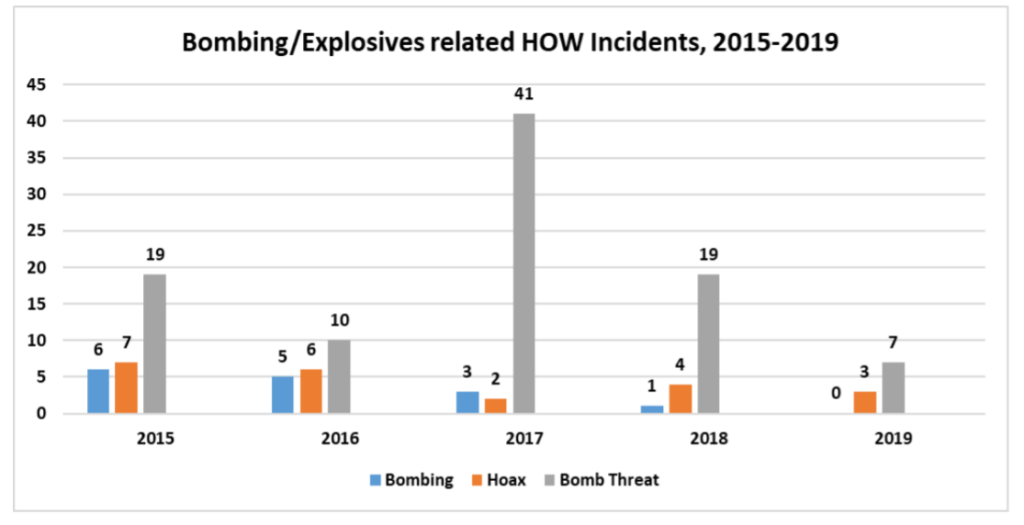
Characteristics Of Incendiary Fires Targeting HOWs
Of the 95 incendiary fire-related incidents reported in BATS for 2019, 28 were listed as involving an accelerant. An accelerant, in fire protection terminology, refers to any substance or mixture that speeds up the development and escalation of fire. When it is spoken about in the context of arson, it also includes those that are typically used to cause explosions.
Among the rest of the 95 incendiary fire incidents reported, 46 involved available combustibles, and 8 involved an incendiary device. There were also 13 incidents where the subtypes were listed as unknown, or left blank by the user in BATS.
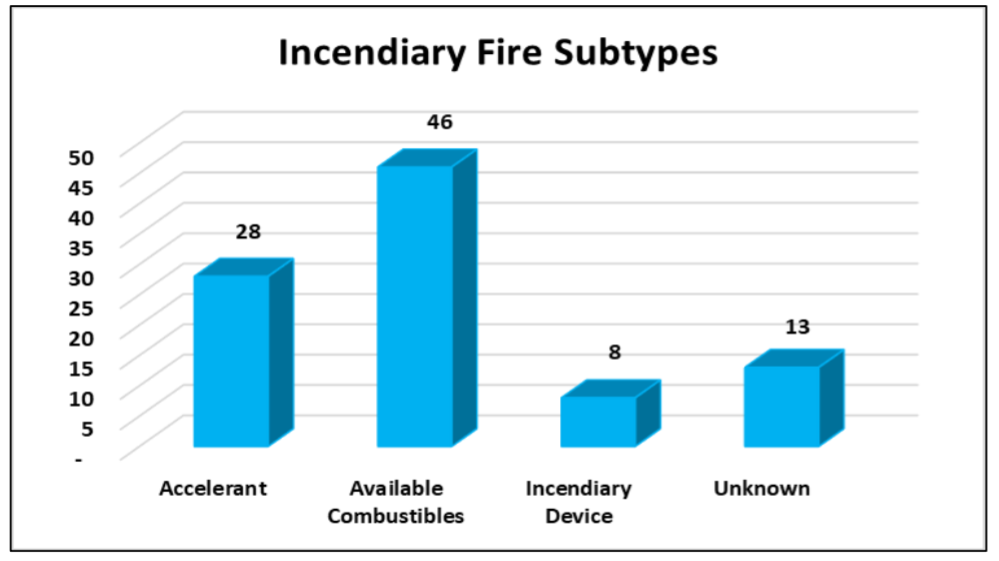
According to the report, a review found that the time of day does not really matter when it comes to incendiary fires. There’s a “minimal difference between the hours of daylight and darkness,” to commit such crimes, it says.
Analysis in the report also found that 33% of all incendiary fires targeting HOWs happened on the weekend, and that Friday had the highest number of reported incidents on a weekday. A high number of incendiary fires also appear to have occurred in spring (i.e. between March and May), the report adds.
While there were reports of three people being injured in fires that occurred at HOWs in 2019, there were no deaths associated with such incidents that was reported in BATS.
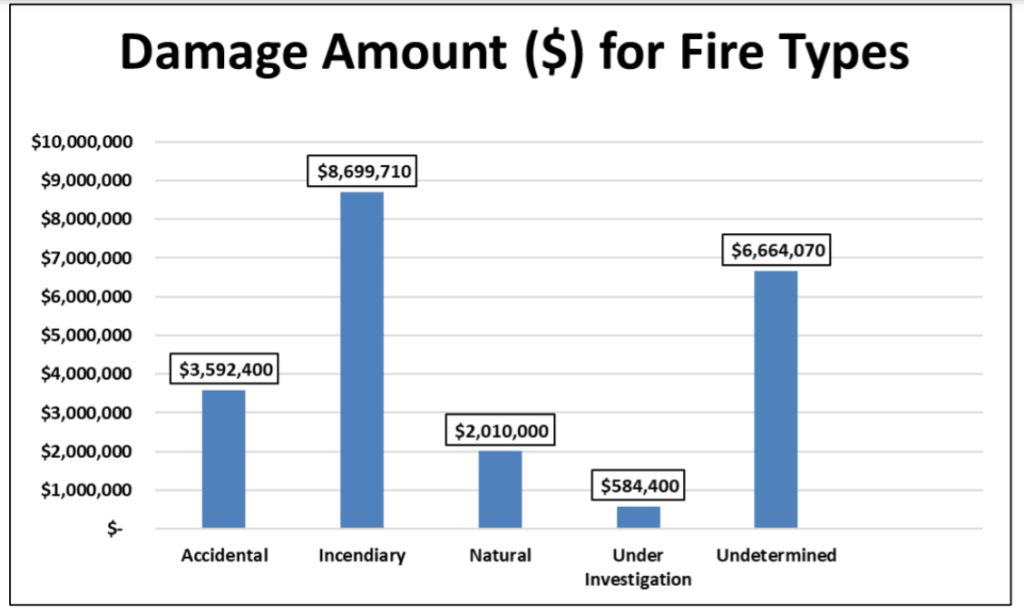
Damages associated with the 224 HOW-related fire incidents reported in BATS totaled more than $21 million for 2019.
Fires listed as incendiary led in terms of type of fire, with more than $8 million in damages. The three main motivations cited for incendiary fires reported were vandalism, revenge and crime concealment. Importantly, there were zero reports of extremism being cited as the motivation behind incendiary fires at HOWs in 2019.
A breakdown of state-wise location for the 484 incendiary HOW fires reported during 2015–19 revealed the highest number of incidents were reported in Texas (51), followed by California (46), along with Florida and Missouri (each with 32), the report says.
